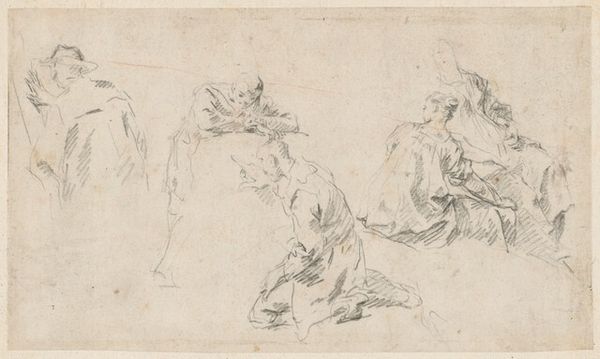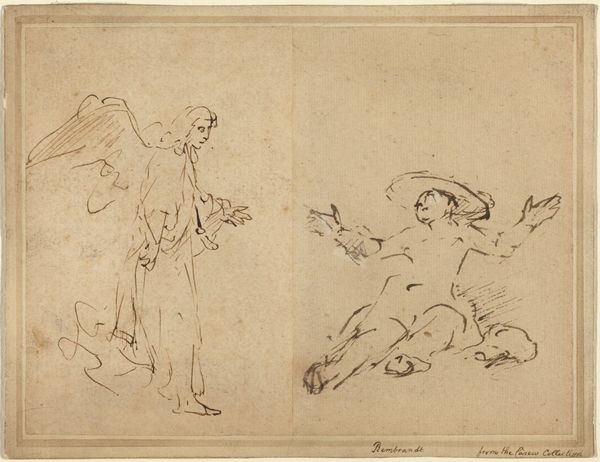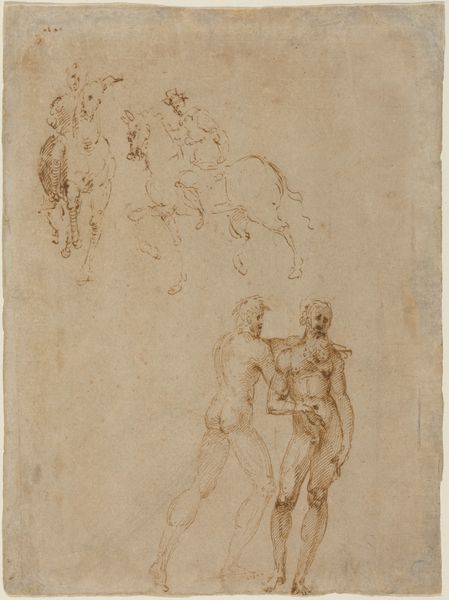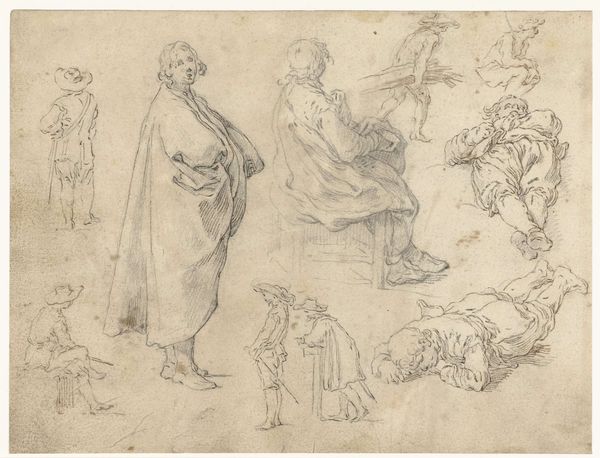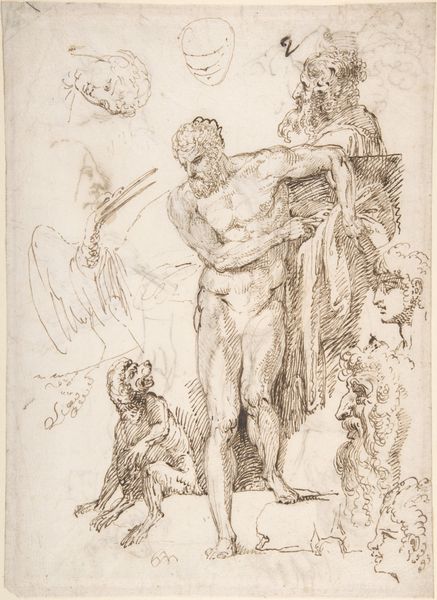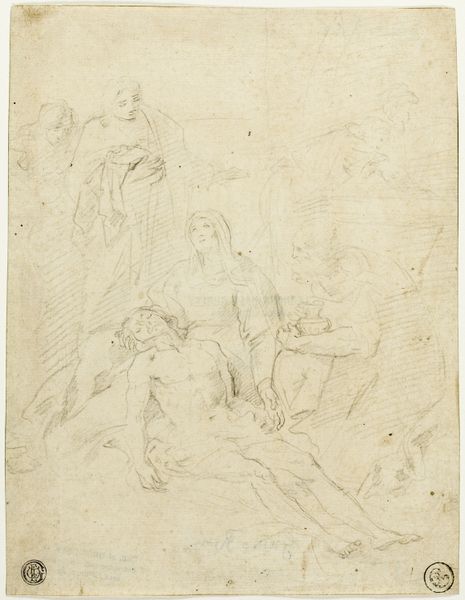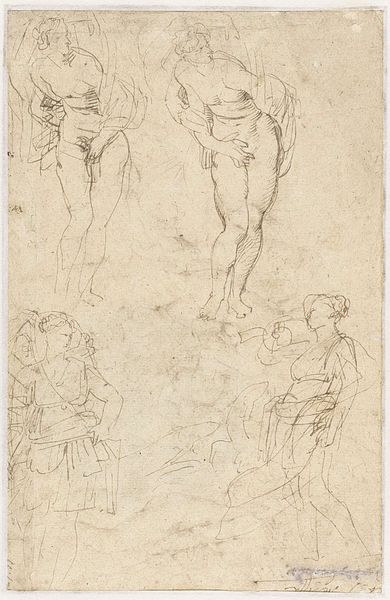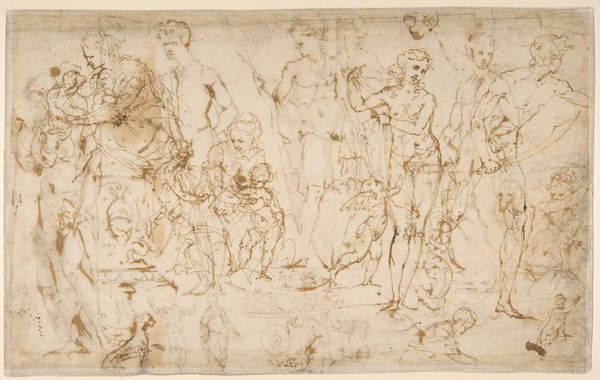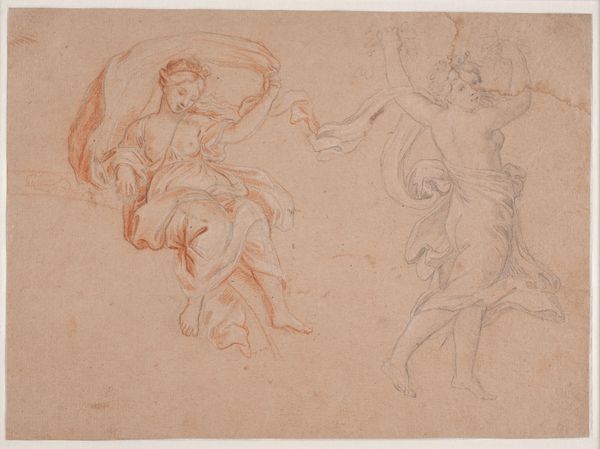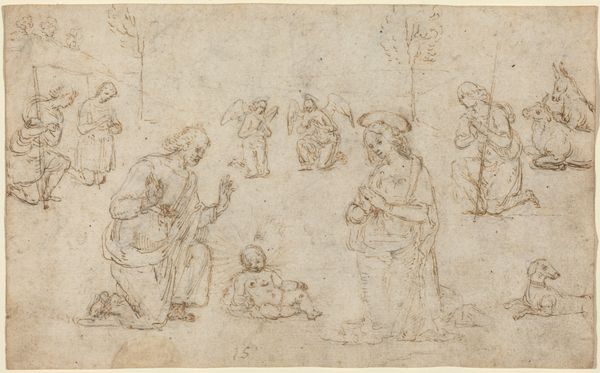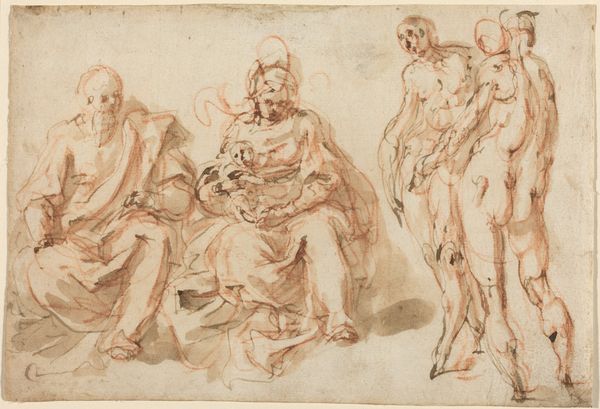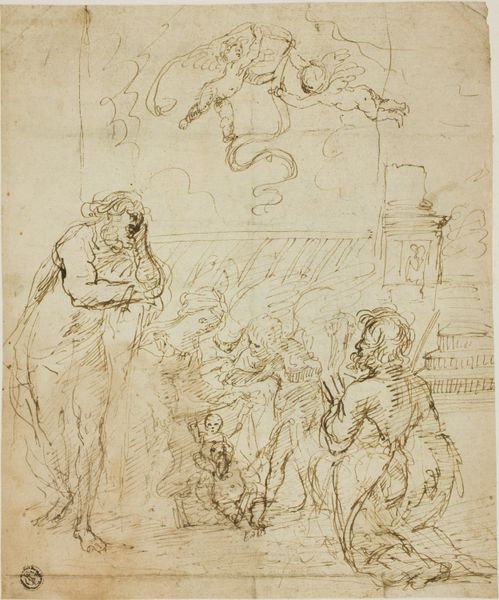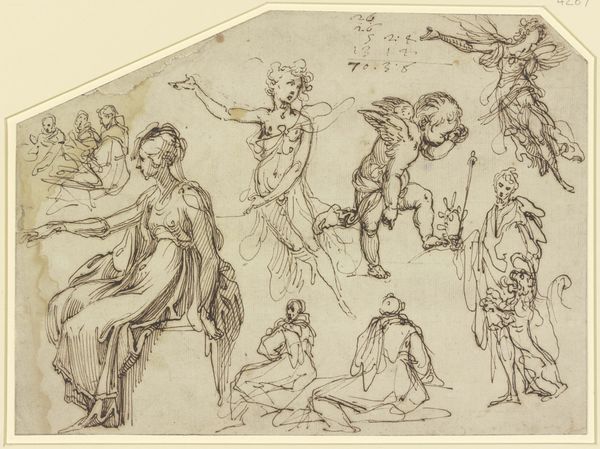
Neptune flanked by Vulcan(?) and the personification of a town 1600 - 1633
0:00
0:00
drawing, paper, ink
#
drawing
#
toned paper
#
light pencil work
#
allegory
#
pencil sketch
#
incomplete sketchy
#
figuration
#
paper
#
11_renaissance
#
personal sketchbook
#
ink
#
sketchwork
#
ink drawing experimentation
#
detailed observational sketch
#
sketchbook drawing
#
history-painting
#
italian-renaissance
#
sketchbook art
Dimensions: 249 mm (height) x 284 mm (width) (bladmaal)
Editor: So, this is "Neptune flanked by Vulcan(?) and the personification of a town," a drawing in ink by Jacopo Palma, created sometime between 1600 and 1633. It feels very immediate, almost like a glimpse into the artist’s thought process. How do you interpret this work, especially given Palma's historical context? Curator: Well, considering Palma's place in Venice during that period, this sketch points to the ongoing dialogue between art and civic identity. Neptune, god of the sea, held particular significance for Venice, a maritime power. His inclusion reflects Venice's self-image as a powerful, divinely favored city-state, almost a maritime empire. Editor: That's fascinating! I hadn’t considered the political dimension. But why depict Vulcan and a town personified alongside Neptune? What statement is the artist making? Curator: Vulcan, the god of fire and metalworking, perhaps suggests the industrious nature that supported Venice's naval power—the shipbuilding, the weaponry. And the town personified highlights the collective identity, the populace itself invested in this maritime strength and allegorical claims of grandeur. Notice how these figures flank Neptune. Placement within an artwork and in a gallery has meaning. Do you think Palma's placement of the three subjects is strategic? Editor: I think so! They’re presented as equally important aspects of Venice. Neptune might be central, but he relies on the other two, creating an impression of interdependent prosperity. So, beyond being a mythological scene, it acts as a visual claim about Venice itself. Curator: Precisely. And think about where and why drawings like these might have circulated. Were they practice for a larger commission meant to solidify Venice’s image? Perhaps given as a token of diplomatic exchange? Considering those potential audiences is important, too. Editor: Wow, I see this drawing in a completely new light. Thanks, I'm leaving with an increased awareness of the Renaissance political landscape! Curator: It works both ways! I hadn't noticed the seemingly equal placement of the flanking characters. Thank you for offering fresh insights!
Comments
No comments
Be the first to comment and join the conversation on the ultimate creative platform.
